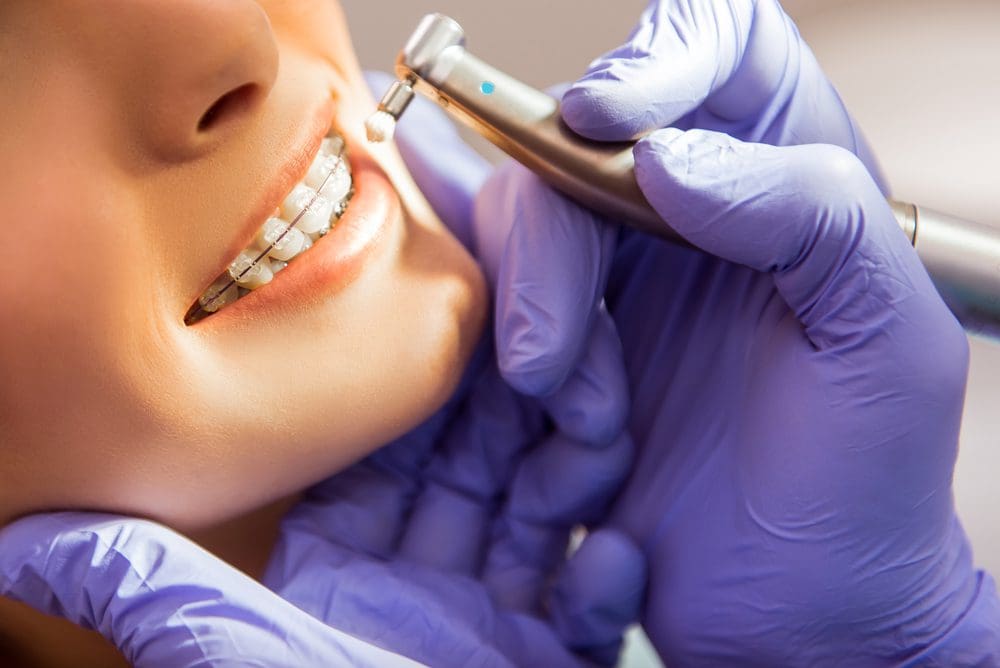How Cumming Orthodontics Addresses Common Braces and Invisalign Problems
How Cumming Orthodontics Addresses Common Braces and Invisalign Problems
Blog Article
Comprehensive Guide to Orthodontics Treatments for Remedying Oral Imbalances
In the world of orthodontics, the trip to achieving a completely aligned smile entails a myriad of treatments tailored to correct oral imbalances. From standard braces to unnoticeable aligners and also surgical options, the field of orthodontics uses a variety of remedies to deal with differing degrees of oral abnormalities. Comprehending the complexities of each procedure, including their mechanisms, advantages, and potential disadvantages, is crucial in making informed decisions about one's orthodontic treatment. As we browse with the extensive overview to orthodontic treatments for remedying dental imbalances, the elaborate information of each method will unfold, clarifying the path toward a useful and unified dental alignment.
Orthodontic Procedures Introduction

Along with clear aligners and conventional dental braces, orthodontists may also recommend various other interventions like headwear, palatal expanders, or retainers to attend to specific placement issues (cumming orthodontist). These treatments are customized to each patient's distinct needs and may involve a mix of therapies to attain the desired outcomes. Routine changes and tracking are important parts of orthodontic treatment to make sure progression is on track and to make any kind of necessary alterations along the road. By undertaking orthodontic treatments, patients can not only accomplish a straighter grin however additionally enhance their total dental wellness and feature.
Standard Braces: Exactly How They Work
When considering orthodontic treatments for oral imbalances, standard dental braces stand out as a time-tested method for remedying teeth placing. Typical braces are composed of braces, cords, and bands that function together to apply continuous pressure on the teeth, slowly relocating them right into the desired placement.
One secret element of exactly how standard dental braces job is the procedure of bone renovation. As stress is related to the teeth with the dental braces, the bone bordering the teeth is improved to support the new tooth settings. This improvement is necessary for the long-term stability of the remedied placement. Clients will require routine changes at the orthodontist's workplace to ensure the braces remain to apply the correct stress for efficient teeth movement.
Invisible Aligners: Disadvantages and pros
Undetectable aligners offer a very discreet and practical option to typical dental braces for dealing with oral imbalances. These clear, custom-made trays are virtually unseen when put on, making them an attractive alternative for people seeking a more aesthetically pleasing orthodontic treatment. Among the primary advantages of invisible aligners is their removability, enabling easier upkeep of dental health compared to standard dental braces. Individuals can remove the aligners prior to eating or cleaning their teeth, reducing the danger of food getting embeded the home appliance and streamlining the cleansing process.

Surgical Orthodontic Options
Surgical find out interventions in orthodontics present feasible choices for attending to intricate oral misalignments that might not be properly solved through conventional orthodontic treatments. While traditional dental braces and invisible aligners can correct several orthodontic concerns, specific situations call for surgical treatment to achieve optimum outcomes. Surgical orthodontic alternatives are commonly advised for severe malocclusions, substantial jaw discrepancies, and cases where the underlying bone structure requires alteration to achieve correct positioning.
One usual surgical orthodontic treatment is orthognathic surgery, which involves repositioning the jaws to remedy useful issues such as difficulty talking or eating. This surgical procedure is frequently performed in collaboration with an orthodontist that assists align the teeth prior to and after the procedure. Surgical orthodontics might additionally involve procedures to reveal affected teeth, remove excess gum tissue, or reshape the jawbone to create a more unified face profile.
Before taking into consideration surgical orthodontic alternatives, people undergo an extensive examination to determine the need and possible advantages of such interventions. aligners. While surgical procedure may seem difficult, it can dramatically boost both the function and visual appeals of the smile in cases where standard orthodontic treatments drop short
Retainers and Post-Treatment Treatment

Failing to conform with post-treatment treatment guidelines can result in relapse, where the teeth progressively move back towards their initial settings. Regular retainer wear, great oral health, and normal dental examinations are vital for preserving the results attained through orthodontic surgical treatment and guaranteeing the long-term security of the dealt with dental alignment.
Verdict
In conclusion, orthodontic treatments provide numerous alternatives for remedying oral imbalances. Surgical orthodontic options are readily available for extra serious imbalances. In general, orthodontic treatments can successfully boost oral health and wellness visit and visual appearance.
As we browse via the extensive overview to orthodontic procedures for correcting oral imbalances, the detailed information of each technique will unravel, losing light on the course towards a unified and practical dental positioning. - cumming orthodontist
One of the most typical orthodontic therapies is the use of braces, which consist of metal braces and cables that apply gentle pressure to slowly change teeth into the desired position.When considering orthodontic treatments for dental misalignments, conventional braces stand out as a time-tested method for remedying teeth positioning. Additionally, unseen aligners might not be appropriate for complex orthodontic concerns that call for more substantial teeth movement, as they are commonly advised for emergency dental office light to modest situations. Retainers are tailor-made orthodontic devices made to hold teeth in their remedied settings after the completion of orthodontic treatment.
Report this page